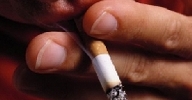An extract fromDr Mel Siff'slandmark;textbook - Supertrainingas retreived from
Thiswell-known test may be applied in several differentways.Invariably
it requires the subject to leap froma standingpositionwitha preliminary
dip and toucha measuringdevicesideways withone'sdominant hand.
Recalling the specificity of training, it is important to notethatthe resultsof thistest correlatebestwithconditionswhichare mostsimilar to
thatof the test. Therefore, it is useful to repeatthe test withthe
non-dominant hand or in the frontal plane withthe athlete usingbothhands toreach for the target.Moreover, there are several differentinitial condi
tions for executingthistest: 1.Startingstatically froman optimum kneeflexed positionusingno arm
swing
2. Startingstatically froman optimum kneeflexed positionusingarm swing
3. Startingdynamically withan optimal kneedip usingno arm swing
4. Startingdynamically withan optimal kneedip usingarm swing.
The majordifferencebetween the first two methods is thatjumping;without;
armswing is intendedto focus primarily on the roleplayed by extension of
the lowerextremity and trunk, without;the picture being confounded by the
use of arm momentum. The majordifferencebetween the static and dynamic
starts is thatthe absenceof an initial sharp dip allows one to focus more
on startingstrengthand the roleplayed by the contractile (actin-myosin) componentof the muscle complex,instead of the moreplyometricrebound
action encouragedby the use of the dip. Thiscan sometimesassist one in ascertainingwhetherthe athlete needs morestrength(or functional
hypertrophy) trainingor morerebound, nervous system training.
It can also be helpful to performthe static testsfromdifferentinitial
kneeangles to obtain a profile of individualjumping;characteristics.For example,if the maximumvertical jumpis attained for a fairly large knee
angle, whichis generally associatedwitha slowerovell;jumping;time from
start to finishof the action, thenit is obviousthatthe athlete needs to
concentrate on modifying his rangeand speed of maximal strengthproduction.
Table 8.12 provides guidelines concerningthe depth of loaded kneedips.
Thisrevealsthatthe dip chacteristicallyis deeperfor heavierloadsor
persons and thatin all cases the pause during the dip shouldnot lastlonger than0.25second.Herein lies the benefit of performing;pushjerks or jerks
off rackswithdifferentweights as a formof supplementaryplyometric training.After all, plyometrictrainingis of little valueif it fails to enhanceadequately explosive strengthor power overthe rangerequiredin a
given activity. The use of drillswhichdo not correlatestrongly withthe
functional needs of a given sport constituteone of the mostcommon errors in
popular plyometrictraining....... >
Some othervariants of the jumptestsare:
A. Jumpstestsfromeither leg (static and ballisticversions)
B. Jump testswitha run up (leftand right) C.Jump testsfacing the wall or measuringdevice.
One shouldalso not forget the use of broadjumptestsfrombotha static and
a ballisticdip start. Sergealso used to do these exercises.Make sure
thatif you use them to landon a surface thatwill absorbsome of the shock,
but do not use veryshock absorbing;surfaces for "plyometric"exercises,
since thiscan markedly lengthenthe couplingtime between eccentric and concentricphases of the action.
Obviously, you will choosethe testswhichbestsuit yourpurpose, since it
is unnecessaryto prescribe hosts of tests(and ballistictrainingdrills)
whichmay have minimal bearing on the conditioningof yourathlete. DrMel C Siff



